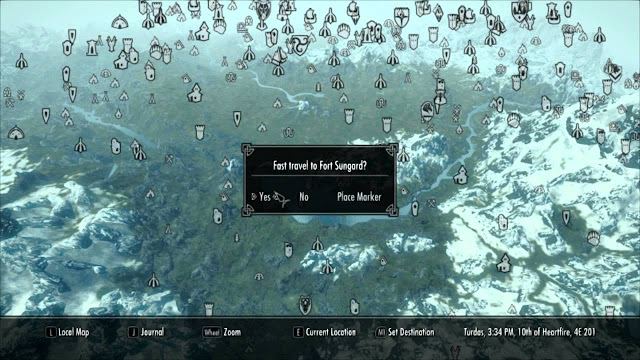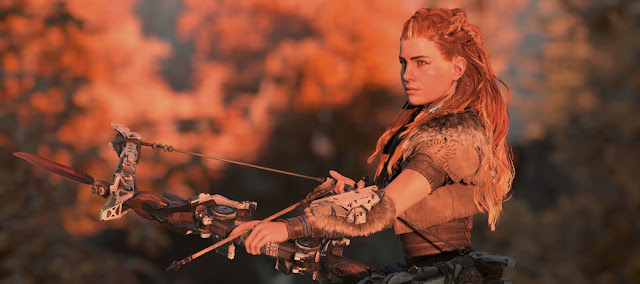Jedi: Fallen Order's Holomap Is A Confusing Mess
Star Wars Jedi: Fallen Order is a good game. It's not great, but it's not terrible either. It's narrative, coupled with an incredible score and great voice acting, is held back by a clunky combat system along with a general atmosphere of buggy-ness, that is right at home in the forested planet of Kashyyyk, but leaves a bad taste in your mouth when present inside a videogame of such scale.
Apart from general viewing troubles with the holomap, the controls are also a mess. While they are clearly mentioned, actually using these features is frustrating at minimum. The game allows you to change the camera angle to view the holomap in the way you want to. On PS4, using R2 and L2 allows you to zoom in and zoom out respectively, while the d-pad allows you to change elevation/floor levels that makes the chosen level brighter and the others more transparent. While these controls work pretty well, it is the left stick to move and the right stick to rotate that is a real pain in the thumb.
I enjoyed my time with this game, but along with subjective dislikes such as its difficulty scaling and world design, there is one feature of this game, that I subjectively believe is objectively not great. Once again not great, but rather this time, not good either. Dropping down into the lower reaches of like-ability is Jedi: Fallen Order's holomap.
When it comes to making an interconnected world, and designing a map for players to navigate it, Respawn had a tough task at their hands. There are so many paths that loop back on themselves, so many secret areas, and so many shortcuts in this game, that creating a map that made them easily navigable, was, to simply put it: a task requiring the force. And sadly for us players, the force was nowhere to be.
Respawn and the development team decided that it would be the right decision to create a 3-dimensional map, and rightly so. There is a lot of verticality present in the game, and charting this up and down terrain would be suicidal task with a 2-dimensional map. The developers would have to insert different maps for each floor, and since Jedi: Fallen Order takes place in mostly outdoor environments, it would have been hard to recreate the sprawling topography and the paths that link it together: a mind-boggling mess for players trying to navigate the game world.
However, this mind-boggling mess continues into the game's 3-dimensional holomap. For started, the map is see through, as evident through the 'holo' within it's name. This makes it really confusing while trying to figure out whether the thing that you see is really a part of the landscape, or actually just whats underneath it. This can be a real mess in the Ice Caves underneath the planet of Zeffo, which is the second or third planet the player visits, depending on whether or not you count the planet of Bracca, since its where the game's intro and tutorial take place.
Zeffo's Ice Caves are ones that have troubled almost every single player, whether its when they first visit the planet, or when they return to it later on in the game's story. Up until the first time you visit the caves, what little of the game you have experienced so far as taken place above ground, providing clear views of the surroundings and minimum claustrophobia to throw you off your senses. On the contrary, the Ice Caves are underground, dimly lit, and extremely claustrophobic. The player is first tasked with exiting these caves and heading back to their ship: the Mantis. This is where trouble comes into play.
The holo-map, one that has served you well up until this point, descends into chaos as it decides that it's time to spill spaghetti on itself, and prevent you from clearly viewing and understanding the area. It turns into this jumbled mess of ziplines, lifts, ice slides, and just general pathways. In addition, the elevation changes make it hard to gauge your location, especially since the map shows the entire planet of Zeffo, overlapping the ice caves with the overground terrain making it hard to understand and navigate.
The map prevents you from viewing it in a top down angle, forcing you to view it from the sides. This leads to the added confusion of being able to see all the other elevation levels in the area, instead of just being able to view the desired one from a top down angle. While the rotation leads to being able to see stuff that was previously covered, it only leads to other stuff being visible in the background through the transparent nature of the map.
Not to be overly critical of this rather minor feature and give credit where credit is due, Jedi: Fallen Order does a great job with the labelling and providing key information to the player. The name of the subarea and planet are clearly mentioned, as well as exploration percentages and the number of secrets that the player has found. The legend is also incredibly useful, and different elements in the game world are clearly marked on the map, such as green doors for areas that are available, electric blue markers for meditation save spots, and bright golden icons for objectives to name a few. In addition, the integration of the holo-map into the game is done very well. The droid BD-1 is used to provide the player with a map, giving it an actual and logical reason to exist within the game world.
Star Wars Jedi: Fallen Order's holomap is a stumbling block. It drastically slows down gameplay and exploration, leaving players frustrating and unable to progress. It is also plagued by general design flaws, limiting key ingredients of the gameplay loop such as power-up driven exploration. For a game with a metroidvania-esque design philosophy, the confusing mess of a holomap leads to a large problem for a what is a key part of this game.
My Star Wars Jedi Fallen Order Review: https://platyview.blogspot.com/2021/03/star-wars-jedi-fallen-order-review.html






This comment has been removed by a blog administrator.
ReplyDeleteThis comment has been removed by a blog administrator.
ReplyDelete